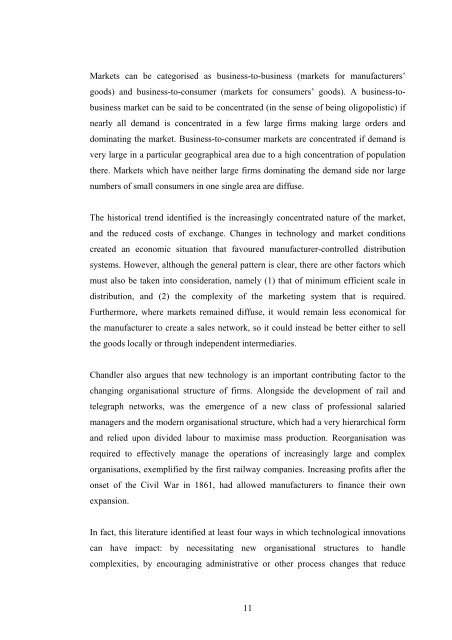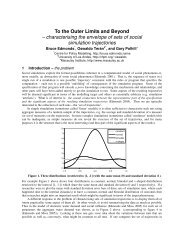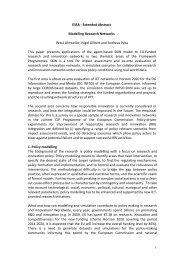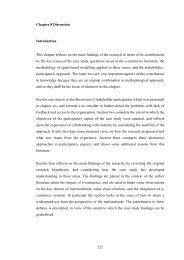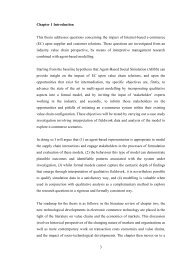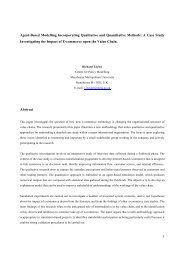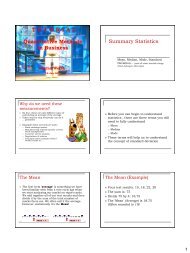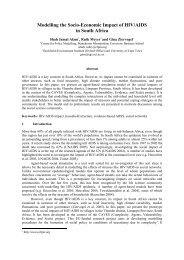7 Chapter 2 Literature Review: Markets, Intermediation and E ...
7 Chapter 2 Literature Review: Markets, Intermediation and E ...
7 Chapter 2 Literature Review: Markets, Intermediation and E ...
Create successful ePaper yourself
Turn your PDF publications into a flip-book with our unique Google optimized e-Paper software.
<strong>Markets</strong> can be categorised as business-to-business (markets for manufacturers’<br />
goods) <strong>and</strong> business-to-consumer (markets for consumers’ goods). A business-tobusiness<br />
market can be said to be concentrated (in the sense of being oligopolistic) if<br />
nearly all dem<strong>and</strong> is concentrated in a few large firms making large orders <strong>and</strong><br />
dominating the market. Business-to-consumer markets are concentrated if dem<strong>and</strong> is<br />
very large in a particular geographical area due to a high concentration of population<br />
there. <strong>Markets</strong> which have neither large firms dominating the dem<strong>and</strong> side nor large<br />
numbers of small consumers in one single area are diffuse.<br />
The historical trend identified is the increasingly concentrated nature of the market,<br />
<strong>and</strong> the reduced costs of exchange. Changes in technology <strong>and</strong> market conditions<br />
created an economic situation that favoured manufacturer-controlled distribution<br />
systems. However, although the general pattern is clear, there are other factors which<br />
must also be taken into consideration, namely (1) that of minimum efficient scale in<br />
distribution, <strong>and</strong> (2) the complexity of the marketing system that is required.<br />
Furthermore, where markets remained diffuse, it would remain less economical for<br />
the manufacturer to create a sales network, so it could instead be better either to sell<br />
the goods locally or through independent intermediaries.<br />
Ch<strong>and</strong>ler also argues that new technology is an important contributing factor to the<br />
changing organisational structure of firms. Alongside the development of rail <strong>and</strong><br />
telegraph networks, was the emergence of a new class of professional salaried<br />
managers <strong>and</strong> the modern organisational structure, which had a very hierarchical form<br />
<strong>and</strong> relied upon divided labour to maximise mass production. Reorganisation was<br />
required to effectively manage the operations of increasingly large <strong>and</strong> complex<br />
organisations, exemplified by the first railway companies. Increasing profits after the<br />
onset of the Civil War in 1861, had allowed manufacturers to finance their own<br />
expansion.<br />
In fact, this literature identified at least four ways in which technological innovations<br />
can have impact: by necessitating new organisational structures to h<strong>and</strong>le<br />
complexities, by encouraging administrative or other process changes that reduce<br />
11


